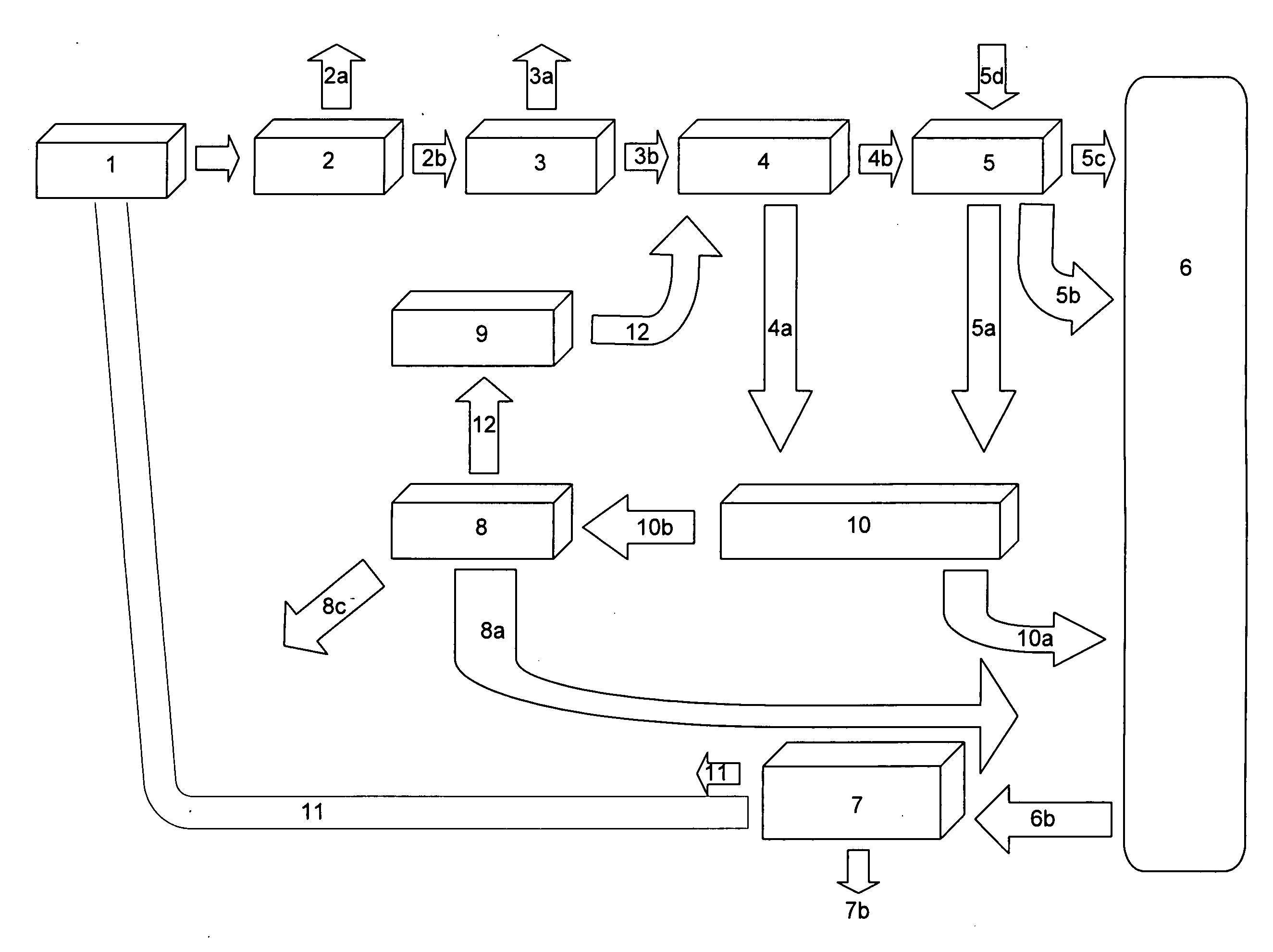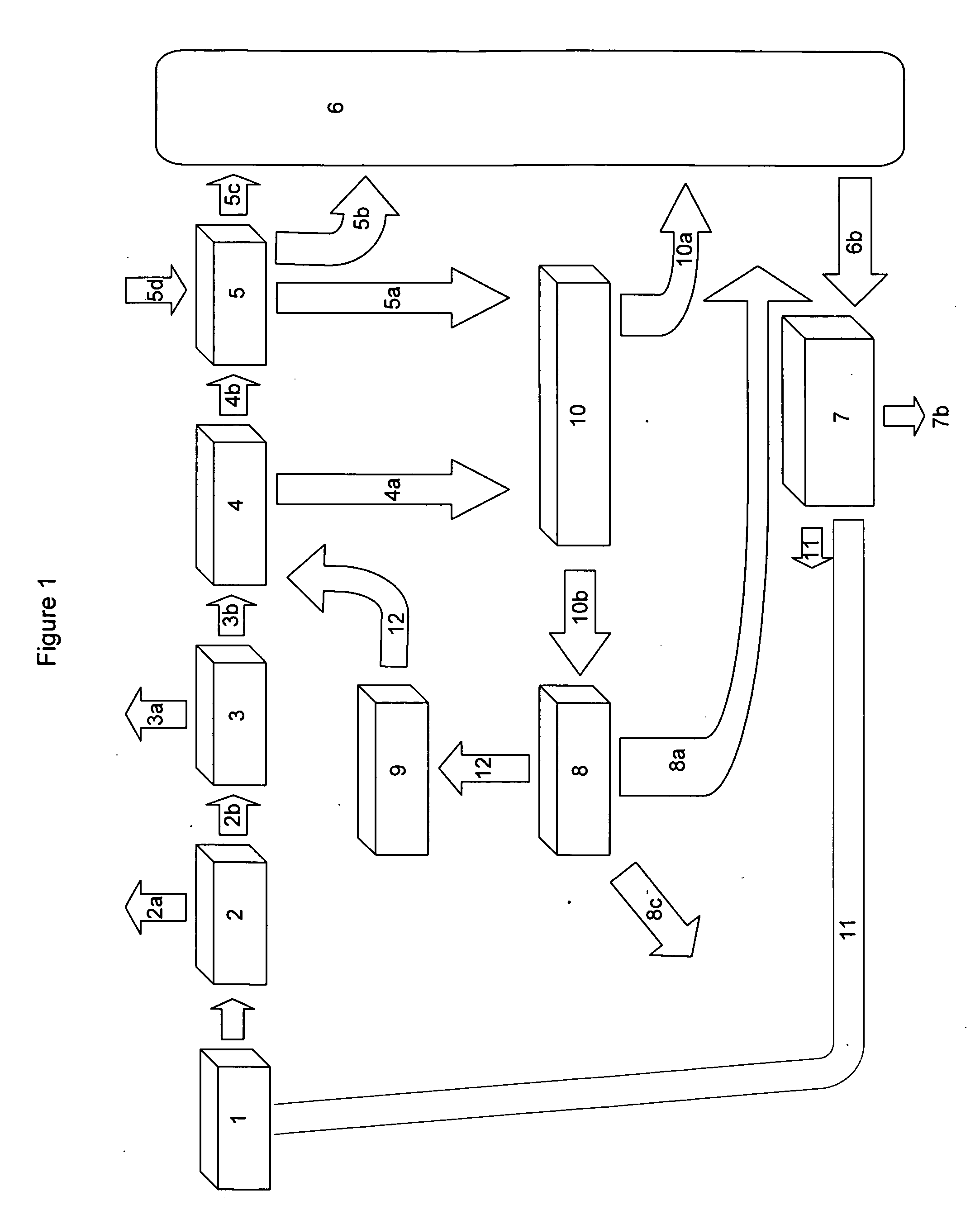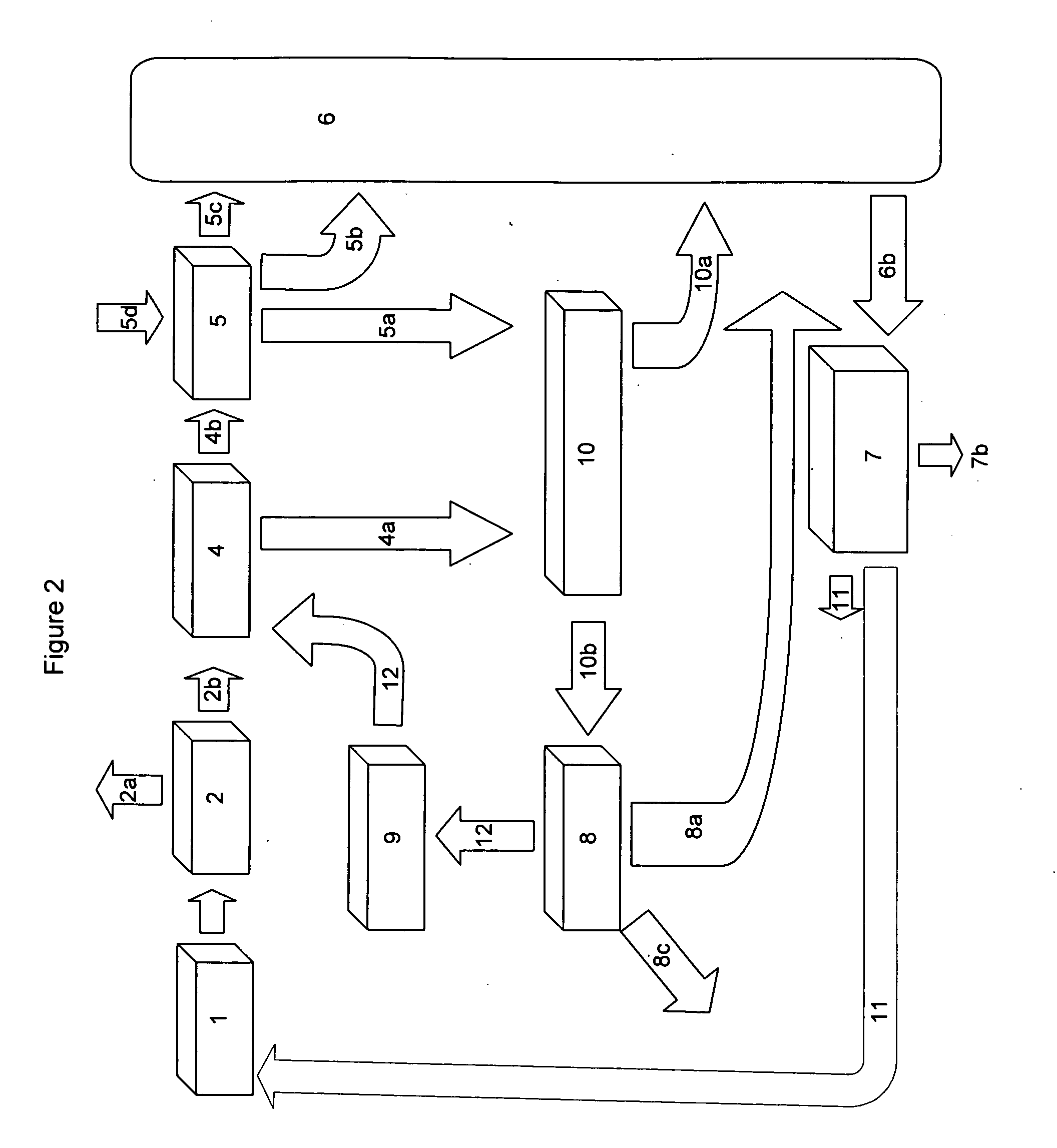Methods and Systems for Biomass Recycling and Energy Production
a biomass and energy production technology, applied in the field of biomass recycling and energy production, can solve the problems of difficult and expensive treatment of biological sludge produced by the activated sludge process and other aerobic processes, and the problem of sludge disposition, so as to reduce the amount of residual material
- Summary
- Abstract
- Description
- Claims
- Application Information
AI Technical Summary
Benefits of technology
Problems solved by technology
Method used
Image
Examples
example 1
[0081]A system of the present invention is used to process and treat the biomass from 5,000 dairy cattle, or 12,500 hogs, or 1.2 million chickens. The biomass is pretreated to remove debris in a debris separation unit. Water is added to make the biomass feedstock a flowable mixture and the biomass is transported to the hydrolysis unit where it is retained for about 20 hours. More than one hydrolysis unit tank may be used for large amounts. Carbon dioxide gas is released in the hydrolysis unit, and that gas is pumped out of the hydrolysis unit container and the gas is provided to the algae production unit.
[0082]After about 20 hours, the biomass feedstock is pumped to an anaerobic digester unit, where the biomass is acted on by anaerobic microbes for about 3 days. Methane gas and ammonia gas, along with minor amounts of other gases, are produced and pumped to a gas separation unit. The gases are separated, and the methane is pumped to an energy production unit where it is burned in th...
PUM
 Login to View More
Login to View More Abstract
Description
Claims
Application Information
 Login to View More
Login to View More - R&D
- Intellectual Property
- Life Sciences
- Materials
- Tech Scout
- Unparalleled Data Quality
- Higher Quality Content
- 60% Fewer Hallucinations
Browse by: Latest US Patents, China's latest patents, Technical Efficacy Thesaurus, Application Domain, Technology Topic, Popular Technical Reports.
© 2025 PatSnap. All rights reserved.Legal|Privacy policy|Modern Slavery Act Transparency Statement|Sitemap|About US| Contact US: help@patsnap.com



